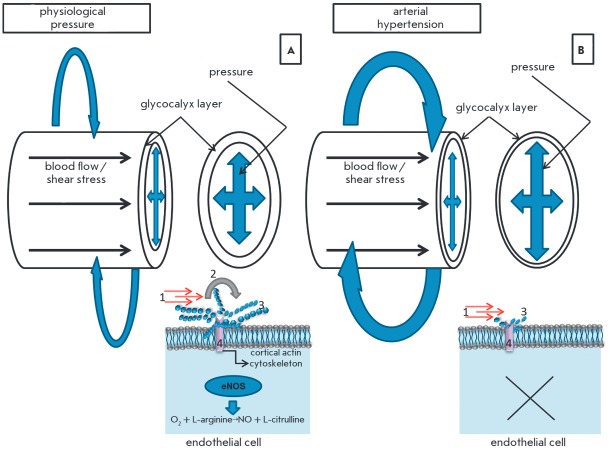Fig. 4.
The role of glycocalyx in the regulation of the vascular tone. A – Regulation of the vascular tone in physiological conditions. Physiological (intact) glycocalyx is a conductor-transducer of mechanical signals to endotheliocyte: shear stress (1), acting in parallel with the vascular wall (induces internal tension, which is realized as an activation of the signal systems that regulate the vascular tone and permeability); and blood pressure, acting perpendicularly to the vascular wall and imposing a stretching action on all vessel and ECM components. Glycocalyx assumes the mechanical load in the form of local torque (2), disperses it and transduces the signal through proteoglycan chains (3) to the so-called core (anchored in the membrane) proteins (4). The main result is eNOS activation, synthesis of endogenous NO, which causes a vasodilatory effect and the reorganization of the actin cytoskeleton providing the adaptation of intercellular contacts to the mechanical load [15, 21, 134]. B – Regulation of the vascular tone in arterial hypertension. Shedding or total absence of a glycocalyx layer during pathophysiological processes leads to the mechanical load directly on the apical cell membrane and suppression of endogenous NO production by endothelial cells. As a result, the blood pressure is increased and intercellular contacts are impaired [21, 134].

